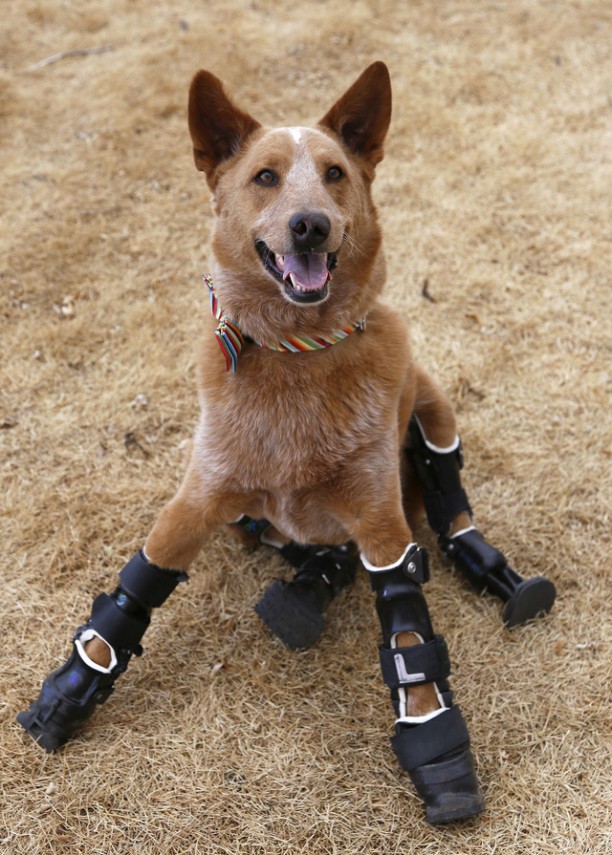There’s something that humans do to strange dogs that is actually the worst thing possible, and yet none of us are aware of it, because we do it to strange humans all the time.
In the human world, it’s quite normal. The problem is that we forget that our canine companions do not live in the human world. They live in the dog world, where what we do to them is very unnatural.
I’m talking about the greeting, which is a ritual. Ritual is very important in the dog world, because so much of what they do is based on instinctive ritual. But ritual is also very important in the human world. The difference is that human ritual is based on intellect and emotion.
 You probably don’t even realize that you use ritual, but you do. For example, you’re at some public event and your friend introduces you to their friend. What do you do? Your friend says the names, then you both extend your hands and shake and say some variation of, “Nice to meet you!”
You probably don’t even realize that you use ritual, but you do. For example, you’re at some public event and your friend introduces you to their friend. What do you do? Your friend says the names, then you both extend your hands and shake and say some variation of, “Nice to meet you!”
And you do that whether or not it’s actually nice to meet the person. That’s one big difference between humans and dogs. Humans can lie while doing their ritual. Dogs cannot. Their ritual is instinctive, so it’s the truth.
Now let’s look at the steps in the human greeting ritual.
It requires a third party or some outside circumstance, like being stuck in line together, someone asking directions, or so on. It would be considered very strange in the human world for somebody to walk up to a complete stranger, extend his hand and say, “Hi, I’m Walter. Who are you?” It wouldn’t be strange if Walter was selling something or taking a survey, but those are also outside circumstances.
In the dog world, there doesn’t need to be any circumstance except two dogs meeting.
In the human greeting ritual, both parties face each other and immediately move into each other’s intimate space with a handshake. In some cultures, this even goes so far as a hug or a kiss.
In the dog world, the first approach is indirect — side to side, not face to face.
 In the human greeting ritual, the two parties will usually immediately engage in some conversation, whether they have any interest in each other or not.
In the human greeting ritual, the two parties will usually immediately engage in some conversation, whether they have any interest in each other or not.
In the dog world, if a dog has no interest, it will walk away and the other dog won’t take it personally.
That worst possible thing that we do to strange dogs is to approach them with the human greeting ritual, but we can’t help it because it is our ritual, and it is so ingrained in our nature that it is very hard to avoid.
This is where intellect can overcome instinct, because you really need to think hard to avoid the temptation of greeting a strange dog the way you’d greet a strange human. Additionally, dogs are just so cute and adorable, and humans love to give nothing but affection to adorable things.
And so, inevitably, when we meet strange dogs, we get right in their faces and talk to them in high-pitched voices, and try to pet them right away and this will put most dogs into one of three states: fight, flight, or avoidance. It’s a good way to get bitten, or to make the dog pee on the floor, or to scare it away.

No touch, no talk, no eye contact is the best and only advice I give for meeting a strange dog. Ignore the dog and let it come to you to get your scent and sense your energy — to the dog, those two things are your “name.”
Then, let the dog decide. If it walks away, then it’s not interested. Don’t take it personally. If it leans or jumps on you, gently push the dog away and claim your space. Do not offer the dog affection until it shows calm, submissive energy. Jumping and leaning are not signs of affection; they are attempts to establish dominance over you. Don’t fall for it! You’re the one setting the rules here.

Beyond those rules, here’s the best way to teach you the proper way to meet a dog. Imagine an animal that would be intimidating to you. Maybe it’s a horse or an elephant because of their size; or a rat or a squirrel because they’re fast and they can bite. In any case, pick the animal, then ask yourself how you would approach it if you found yourself locked in a room with one.
I’m guessing that your first choice would not be to get right in that animal’s face and make baby talk. More likely than not, you’d probably move to your own corner of the room and let that animal do whatever it wanted, maybe hoping that it didn’t notice you at all.
This is what we have to remember about strange dogs. While we see ourselves as name, breed, species, and then animal, dogs see themselves as animal, species, breed, and then name. We need to approach them with respect, but in order to do that, we need to see the world from their point of view.
Stay calm, and follow your instincts!
Cesar says we need to see the world from our dog point of view. How would your dog describe you?






















 With more than half of pet owners reporting traveling with their dogs in their cars at least once per month, Professional Pet Sitter and Owner and Manager of Pet Sit Pros of South Orange County, Ashley Cunningham, encourages pet owners to follow these simple pet-travel safety tips.
According to the
With more than half of pet owners reporting traveling with their dogs in their cars at least once per month, Professional Pet Sitter and Owner and Manager of Pet Sit Pros of South Orange County, Ashley Cunningham, encourages pet owners to follow these simple pet-travel safety tips.
According to the 























 Article Credit:
Article Credit: 
